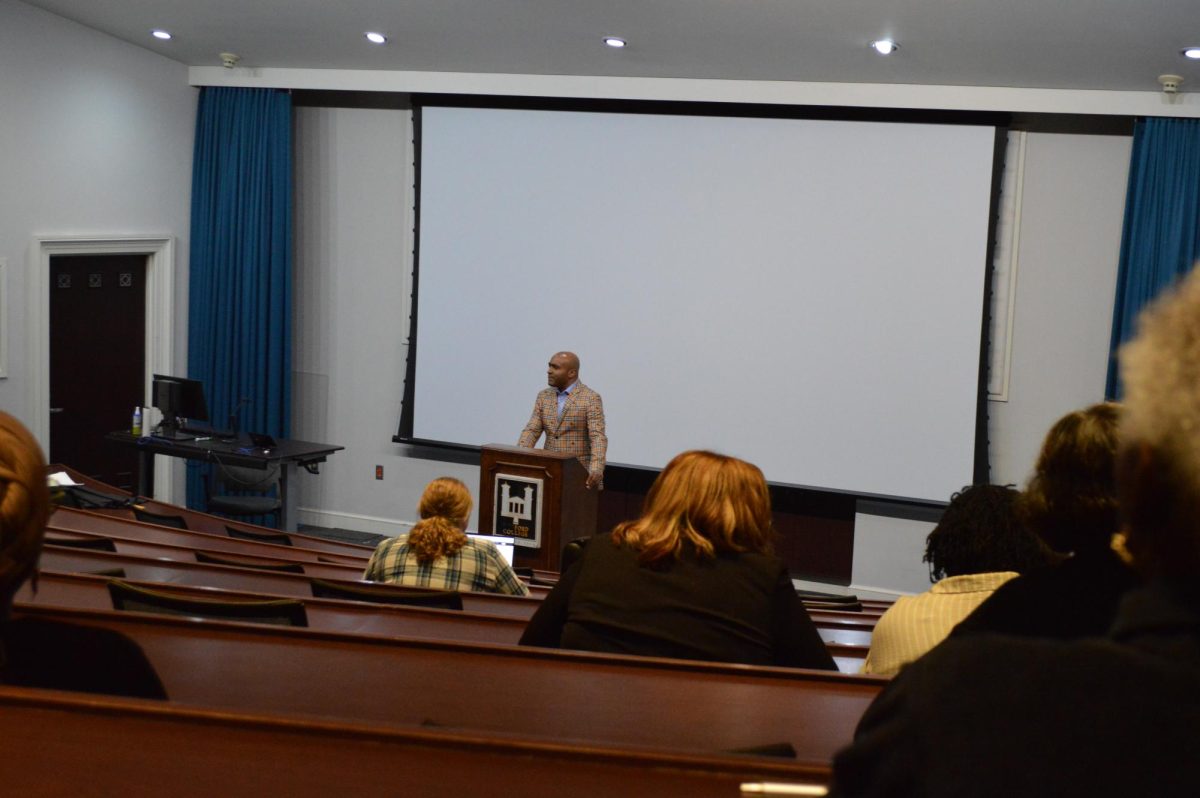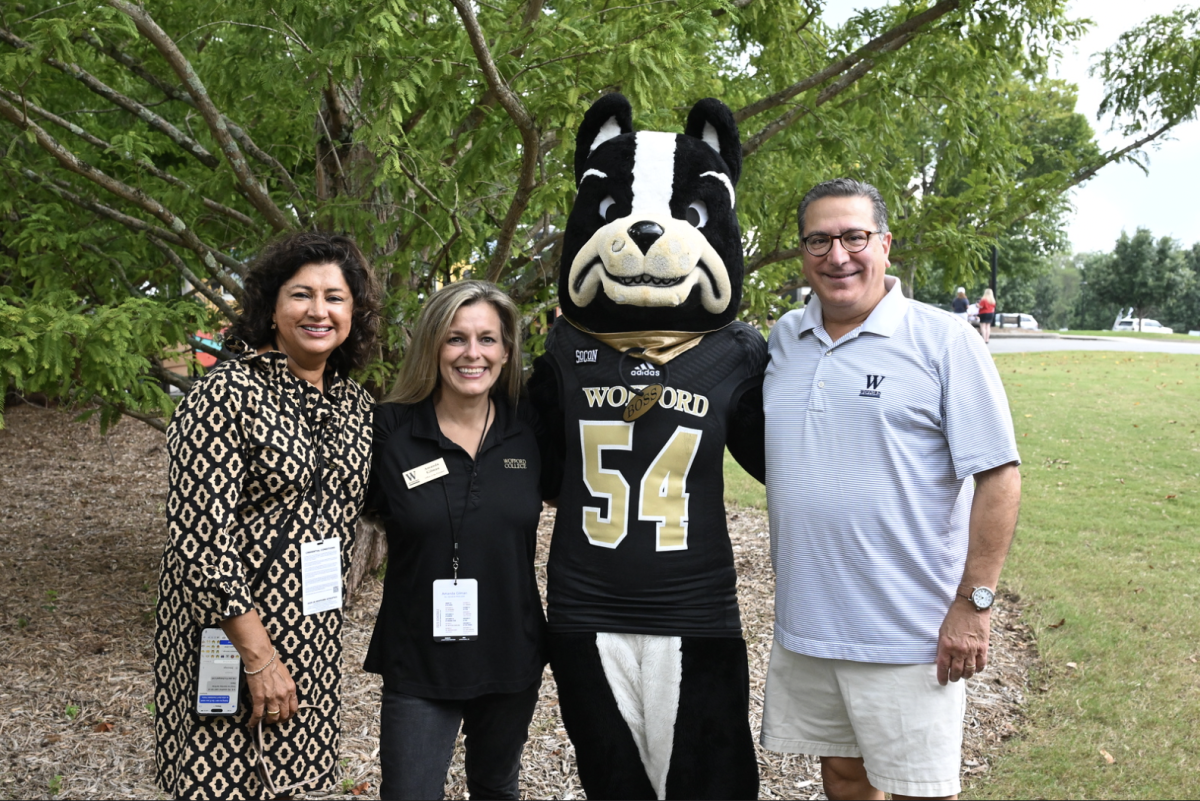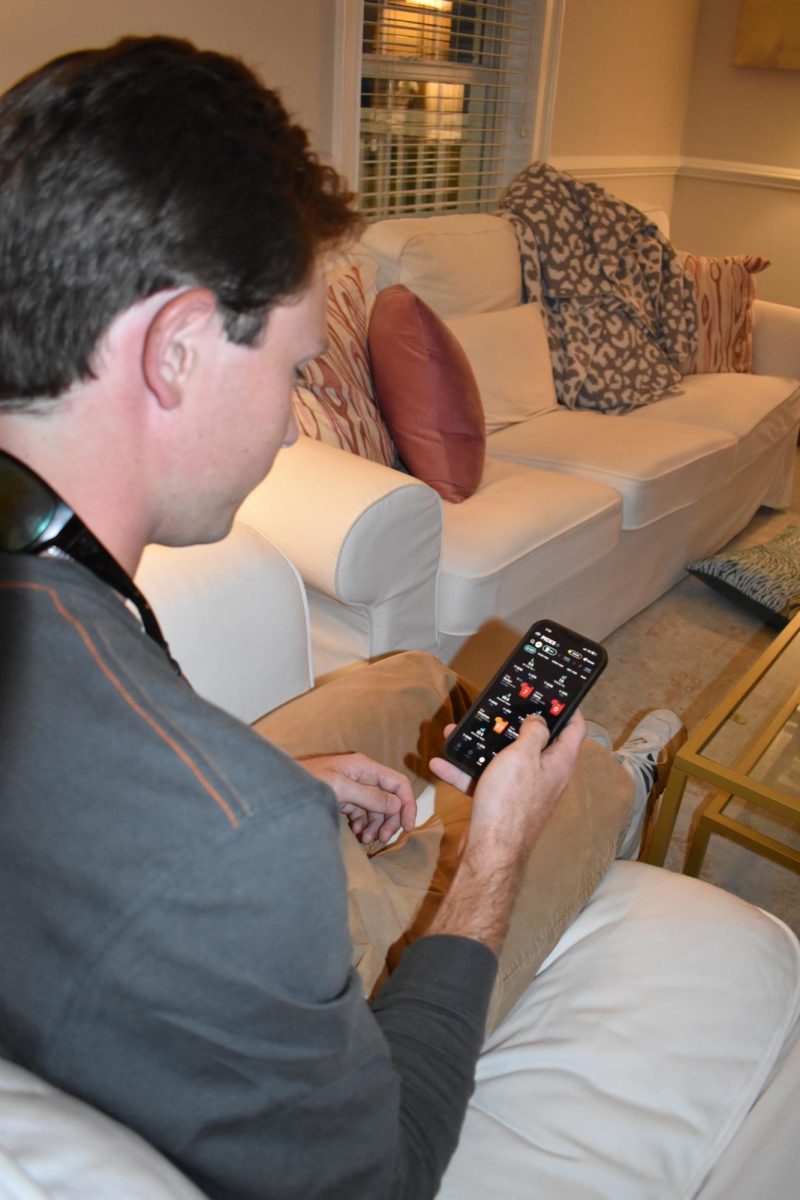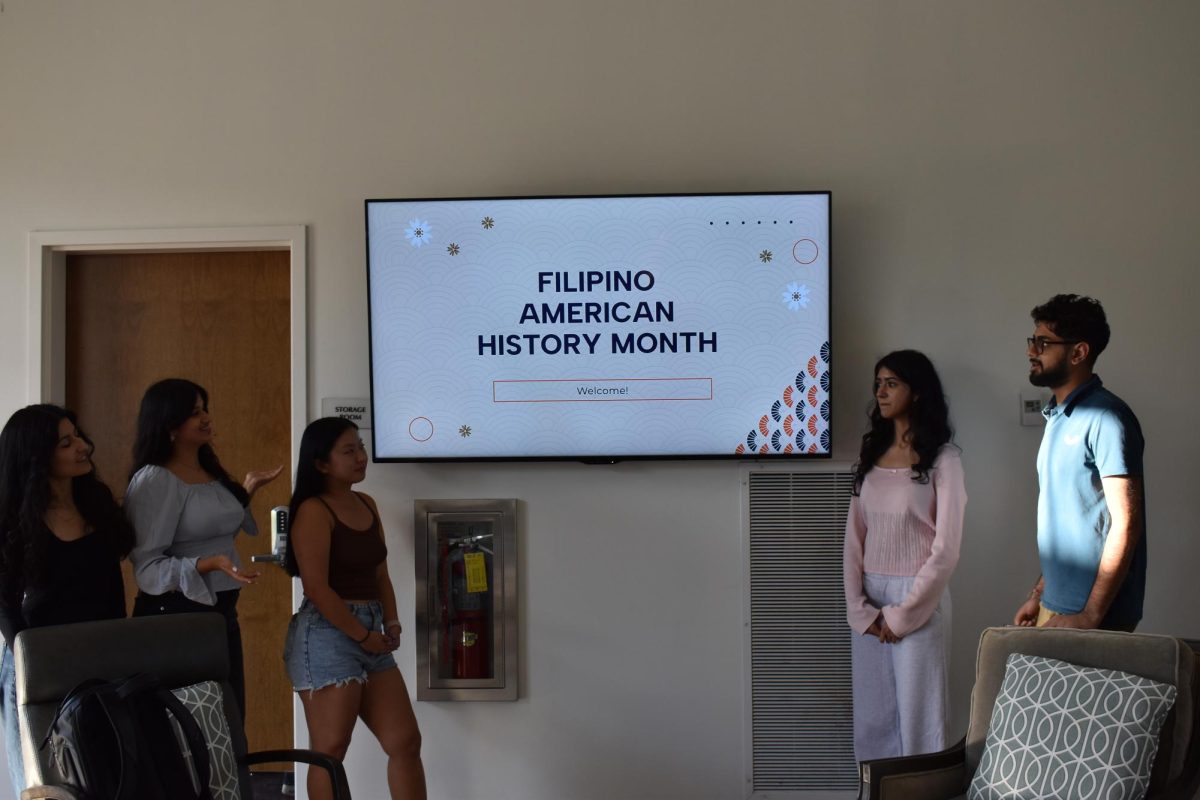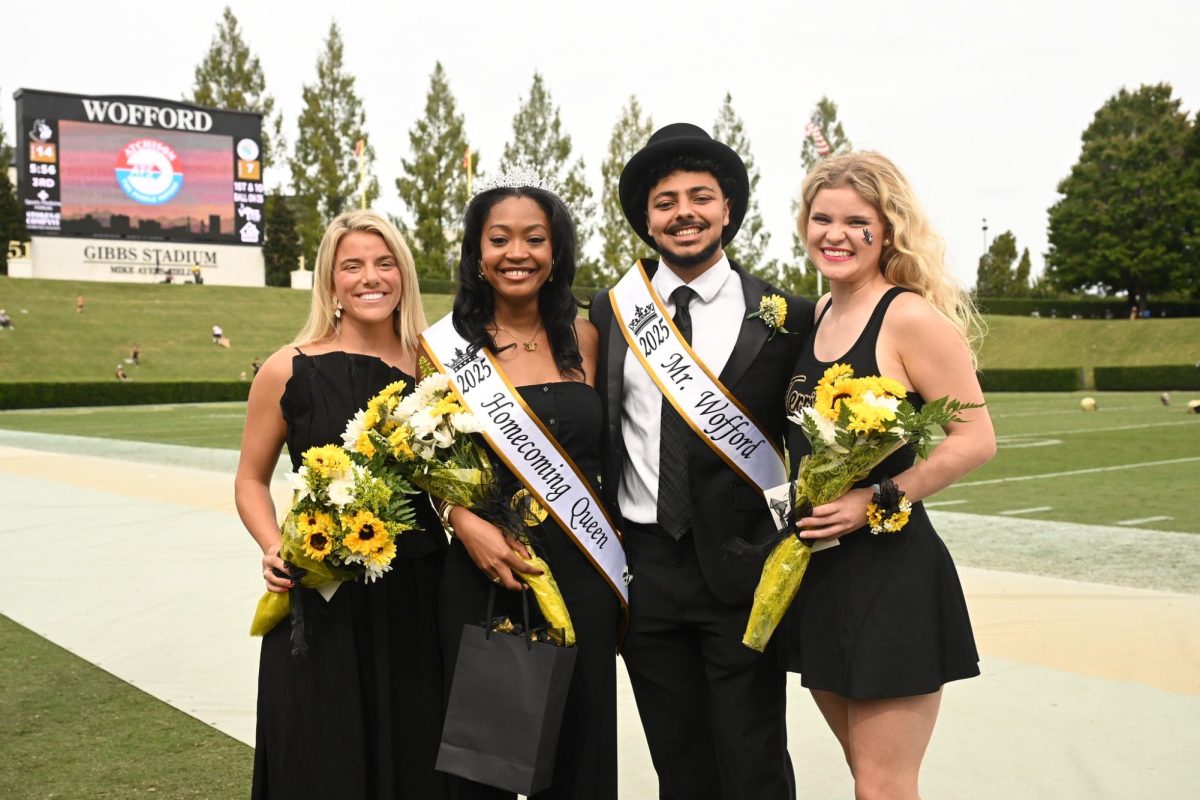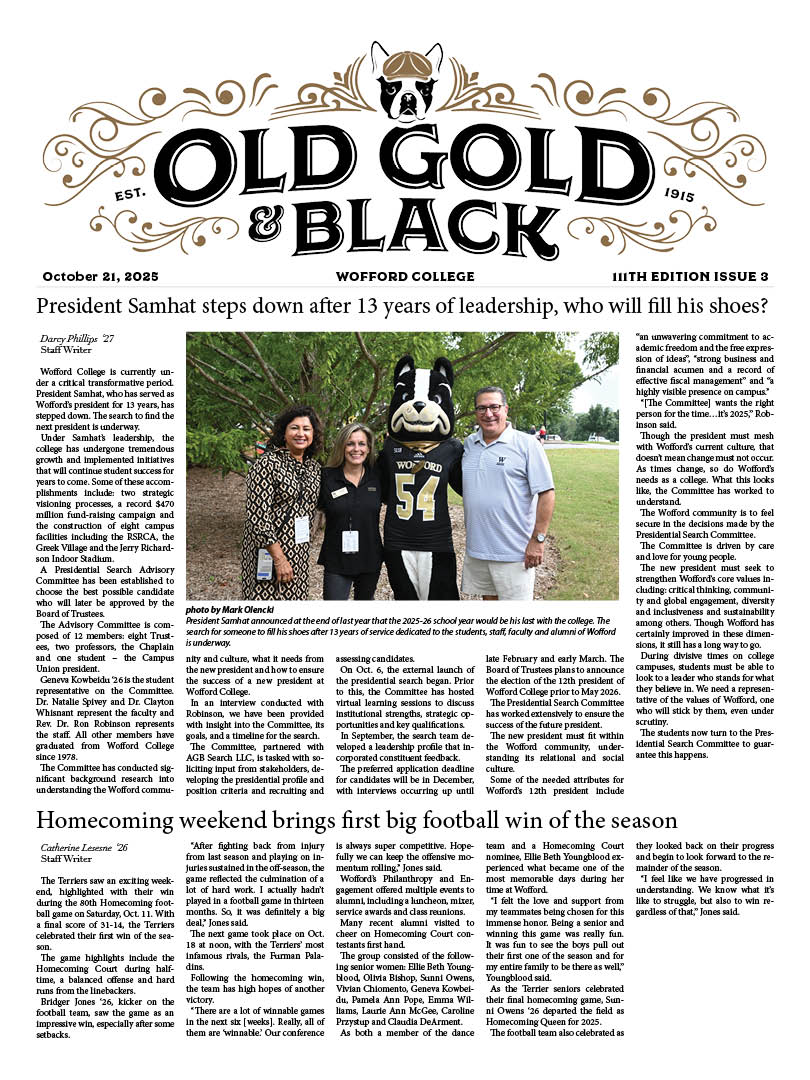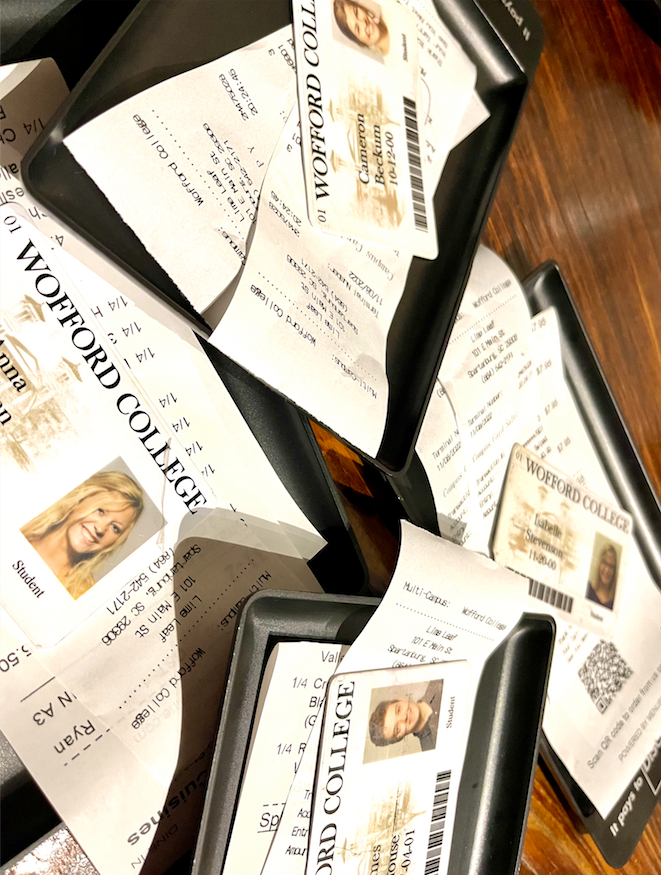By: Steele Smith, senior writer
“How do you break the small liberal arts institution bubble?”
“There are ways the things we are doing in art overlap into so many other fields.”
“Every space, whether it’s academic, artistic, or exploratory, needs a vision”
Having only spent a year teaching at Wofford, professor Jessica Scott-Felder is already asking tough and important questions about the arts at Wofford. Her and Michael Webster’s addition to Wofford’s faculty as tenure-tracked studio arts professors, has placed studio art on the near cusp of becoming a full-fledged major. With the Rosalind Sallenger Richardson Center for the Arts providing a much needed home and studio space for the department, Wofford has the unique chance as an institution to grow this program.
Since its inception, the studio art department at Wofford has functioned with a sort of autonomy that has rendered it a largely under the radar minor. Studios in the basement of Dupre, along with gallery space in odd locations have done little to promote this minor on campus. But all that is changing as Wofford’s culture shifts.
Scott-Felder explained that upon her arrival at Wofford, one of her struggles was working to elevate the status of the arts here.
“For me it was about academic rigor and getting everyone in the Wofford community to see and developing the conversation around art being just as intensive as any other research based discipline,” she said.
In academic spheres, the arts often struggle to be given the legitimacy that other fields of study receive. Much of this discrepancy stems from unfounded perceptions. In many ways, these outside views of the arts are why the development of the studio arts major program is such a massive undertaking. At the collegiate level, expectations are always high. At Wofford, they are even more elevated. Defining what they want the program to be and how they want to embody that definition is something that Scott-Felder and Webster have both described as difficult and exciting.
“We are turning over a new leaf and are able to grow the program from scratch to become what we want it to be. My understanding is that we have a fresh start to go whatever direction we feel like is a good direction for the school,” stated Webster, expressing the freedom he feels the department has been given to shape the major.
The studio art program is essentially wet clay that has been handed to Scott-Felder and Webster to mold into something beautiful and enduring. Though Webster’s graduate field of study was in sculpting, he also brings a wealth of interdisciplinary knowledge he hopes to use to encourage students to approach their art through the lens of various perspectives.
Speaking on the multifaceted nature of his influences as an artist and professor Webster stated, “I see my own work having an emphasis on dealing with how public spaces are constructed and the social ramifications of how we develop public space and how we treat it. I teach with an emphasis on three-dimensional work, but I also have a long history of doing painting and photography as well.”
Wofford now has the necessary individuals in place who provide the important creative and professional energy to drive the studio art program forward.
“Moving forward as a major means we want to have the resources available to support students in a variety of ways, and that means having a diversity of opinions and a diversity of technical knowledge. The studio art faculty will be working with the adjuncts as well as the art sistory faculty on developing the initial plans for where the major will go,” said Webster.
“Right now with a full year under my belt and with having Professor Webster here, the vision is becoming a lot more concrete. I think everyone who is teaching, whether full time tenure-tracked or adjunct, they are in a space where they see that they are molding and influencing and inspiring the visual arts community at Wofford,” explained Scott-Felder. She elaborated on the idea that the movements that are being made now are the result of numerous collaborative efforts.
While still in its budding stages, studio art at Wofford is making strides this year toward serious expansion, becoming another part of the spring of new ideas and projects happening on campus.
“There is still much of it that is in the process of being defined. We are doing everything we can to make this a beneficial and educational experience for anyone interested in the arts, whether they want to pursue the minor or the major,” said Scott-Felder.
Quoting Ralph Waldo Emerson, Scott-Felder said, “‘All life is an experiment.’ When you are learning something, it takes time. Sometimes you have to get it wrong. Sometimes you have to be ok with not knowing the answer and working through that with patience.”


